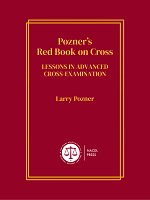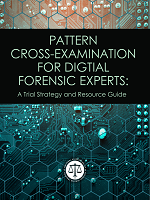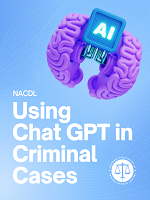Documents
In Spring 2024, the National Institute of Standards and Technology (NIST) and the National Institute of Justice published the Expert Working Group on Human Factors in Forensic DNA Interpretation Forensic DNA Interpretation and Human Factors: Improving the Practice Through a Systems Approach. This important report, the third in a series that includes previous reports in latent print examination and handwriting analysis, focuses on human factors in DNA analysis — in other words, the interactions between individuals and all other elements of a system, among technology, training, products, procedures, workspaces, the overall environment, resources, and institutional culture.
This report includes critical recommendations regarding testimony on transfer and persistence, cognitive bias, transparency, language to be used or avoided by analysts in reporting and testimony, and other areas key to defense practice in DNA cases. Clinton Hughes, a veteran public defender and DNA litigation specialist, was also a member of the expert working group that drafted this report, and this presentation includes his insights on key recommendations and how the defense can make effective use of this major report.
Presented by Dana M. Delger, an attorney consultant to the Forensic Science Standards Program at the National Institute of Standards and Technology (NIST), and Clinton Hughes, Senior Forensic DNA Attorney with Brooklyn Defender Services (BDS)
- Watch the second session in this series, Forensic Science Standards and You: An Introduction to OSAC (available only to NACDL members)
Related Resources
- Taylor, Melissa, et. al., Latent Print Examination and Human Factors: Improving the Practice through a Systems Approach, NIST Interagency/Internal Report (NISTIR), National Institute of Standards and Technology (2012)
- Taylor, Melissa, et. al., Forensic Handwriting Examination and Human Factors: Improving the Practice Through a Systems Approach, NIST Interagency/Internal Report (NISTIR), National Institute of Standards and Technology (2021)
- STRmixTM
- Kalafut, Tim, et. al. A mixed DNA profile controversy revisited, 67 Journal of Forensic Sciences 128 (2022)
- Duncan Taylor & Bas Kokshoorn, Forensic DNA Trace Evidence Interpretation: Activity Level Propositions and Likelihood Ratios (2023)
- van Oorschot, Roland A.H., et. al., Need for dedicated training, competency assessment, authorisations and ongoing proficiency testing for those addressing DNA transfer issues, 6 Forensic Science International: Genetics Supplement Series e32 (2017)
- Cale, Cynthia, Forensic DNA evidence is not infallible, 526 Nature 611 (2015)
- Cale, Cynthia, et. al., Could Secondary DNA Transfer Falsely Place Someone at the Scene of a Crime? 61 Journal of Forensic Sciences 196 (2016)
- Final Report on Complaint 23.67; Tiffany Roy; (Timothy Kalafut Ph.D.; Evaluation of Biological/DNA Results Given Activity Level Propositions) (pdf download), Texas Forensic Science Commission (2024)
- DNA Mixture Interpretation: A NIST Scientific Foundation Review, NIST (draft, 2021)












